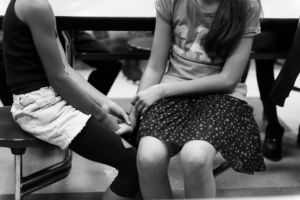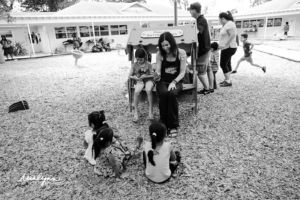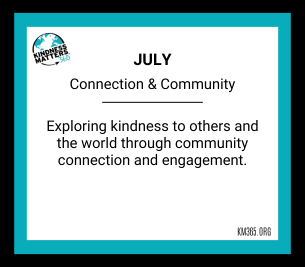Social Awareness
April 9, 2020
Age - Adult & Parent
Social Awareness
by Laura Reiss
| Social awareness is the ability to understand others and how they feel. This includes taking the perspective of others, thinking through how other people might feel in a certain situation, appreciating diversity, recognizing emotions, reading body language, and really understanding how other people fit into the big picture. | |||
| Social awareness is about being empathetic towards someone else and/or the people around you. Empathy, as you probably know, is the ability to put ourselves in the shoes of another person and take their perspective. It takes intentional work. Appreciating diversity and showing respect for others is a critical part of social awareness. Our children need to learn these valuable lessons about social awareness and they learn it from their grown-ups – parents and grandparents, aunts and uncles, teachers and other adult contacts – basically from the rest of us and we need to teach and lead by example. We are all human, we all have differences, and we need to embrace these differences. |  |
||
| Some examples I have seen and done include simple things such as holding the door for a disabled person or helping an elderly person in need with their bags. What can you do today to model this behavior for your children (or for the other children and people who are watching)? “How would I feel?” is an important lesson to be talking about, with our children and with others, all the time. We all need to be thinking about how that might feel if I were in that situation.This can start in school and continue at home. This is what we must be aware of, model and be teaching (This is what our Kindness Matters 365 Foundation is up to!!). Students of all ages can do this. For example, what is Sarah or John thinking right now? In schools, teachers have so many tools to have these conversations. For example, in books and through characters, this lesson is taught. For a character, one may ask, ‘what is she feeling?’ or ‘what might she do?’ or ‘how would you feel in that situation?’ Roll play can be useful at demonstrating and considering this concept. In talking about something you went through, ask questions such as ‘how were you feeling?’ how do you think he/she was feeling?’ ‘what do you think was going on inside his/her head?’ Have that be a continuous part of conversations. This doesn’t have to be a separate lesson. In schools, and now at home, it can be a part of English, History, and even Math and Science. There is always a way to talk about how others are feeling or thinking and how you can learn to work together. | |||
 |
For younger children, and at home, we can talk about noticing facial expressions and body language as ways to empathize and decide if someone need some space, appears angry, or need support. If someone appears sad, think about and discuss with your child about how they might feel if they were in that situation. We also need to learn and teach how might this feel given the differences we have in our diverse culture as we seek to understand each other as humans. We need only look at the news to see how important this is in our times and in our society. | ||
| I invite us all to pay attention, be mindful of what’s going on in another’s world, do unto others…. and show KINDNESS. | |||


